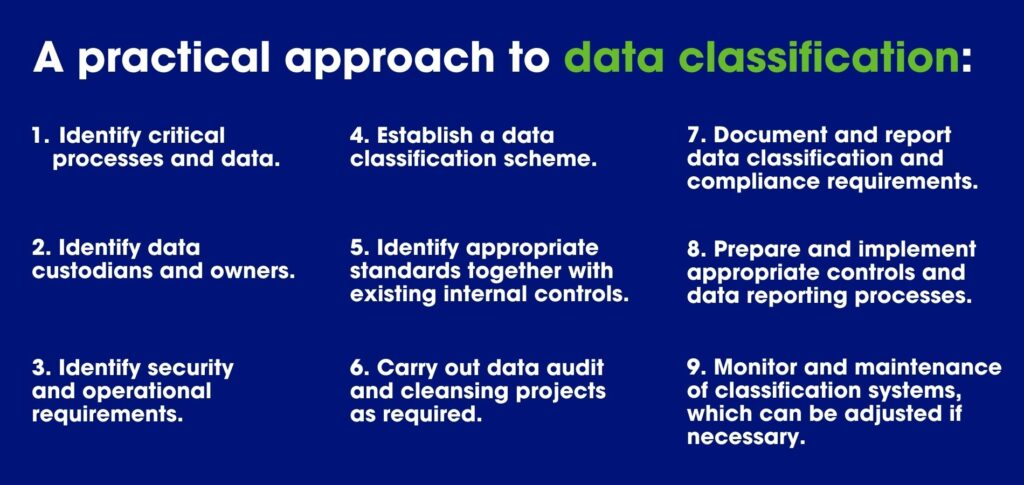Nearly every business process today is either automated or assisted by technology. And there are increased regulations and more compliance issues—such as HIPAA or HITECH— to deal with as well. With this in mind, organizations must break down their data silos to receive a fully-faceted look at the information they hold. Before one can fully manage the information, however, you need to classify it. Below are some reasons why you should classify and analyze your data whether it needs to be compliant or not:
- Find data as quickly as possible.
- Ensure you don’t duplicate data.
- Save storage, speed up retrieval times, and reduce the potential for data breaches.
- Assist in meeting legal and regulatory requirements for retrieving specific information within set timeframes.
- Improve response to potential or actual data breaches.
- Determine appropriate security controls and monitor compliance.
At netlogx, we’ve developed a practical approach to data classification that focuses on sensitive information subject to legal and regulatory requirements. Organizations that embrace the classification and compliance analysis approach are less likely to run into issues. Even if their data is compromised, a proactive plan helps to remediate any problems. These organizations also see significant cost reductions in their information management related to storage cost and data usage.

We classify and evaluate data based on its confidentiality, integrity, and availability requirements. Sensitive data is tagged to identify special levels of security compliance, which is another feature that significantly reduces the cost of the process. Below is the step-by-step list:
- Identify critical processes and data.
- Identify data custodians and owners.
- Identify security and operational requirements.
- Establish a data classification scheme.
- Identify appropriate standards together with existing internal controls.
- Carry out data audit and cleansing projects as required.
- Document and report data classification and compliance requirements.
- Prepare and implement appropriate controls and data reporting processes.
- Monitor and maintenance of classification systems, which can be adjusted if necessary.
If you would like to learn more about data classification and compliance and how netlogx can help your business be the best it can be, request a consultation to get started.

netlogx is a leading consulting services company that helps government entities, businesses, and nonprofits operate more efficiently with our project management, business process consulting, and strategic consulting services. As a well-established woman-owned business with consultants across the country, netlogx leverages industry standard methodologies and best practices to support our clients and bring projects and visions to successful completion.



